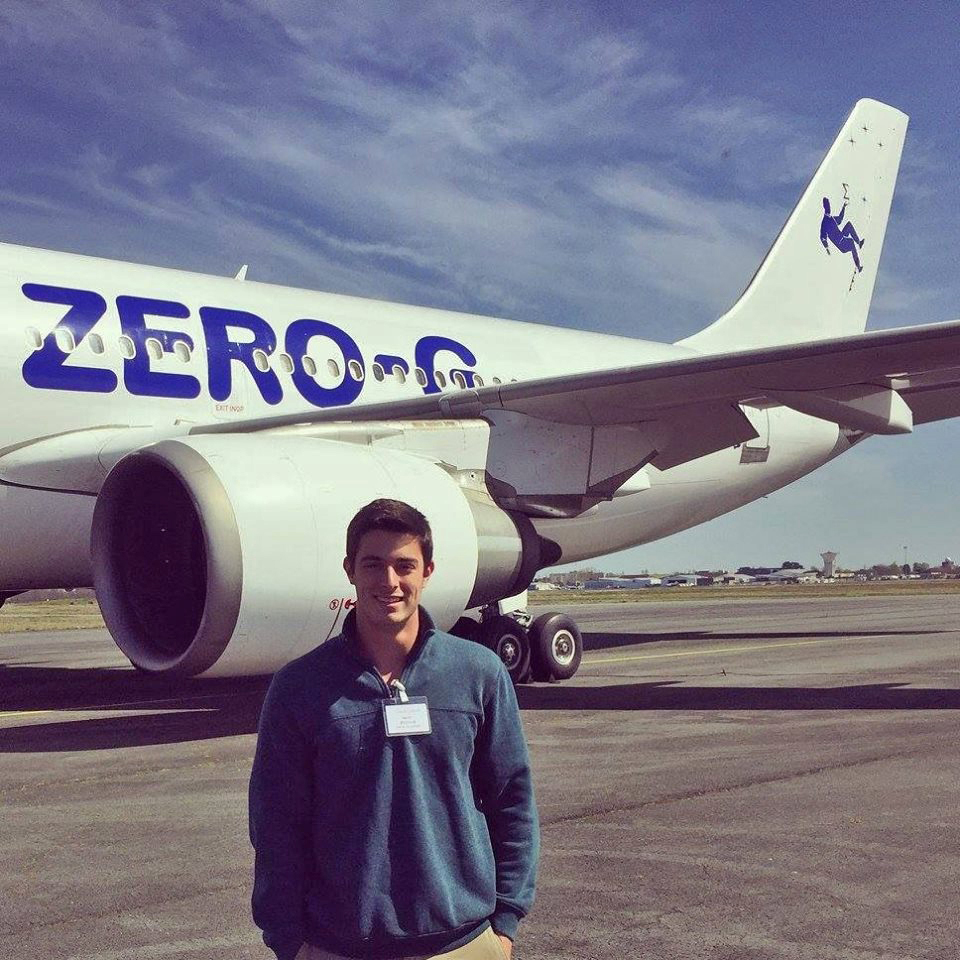Nevin Brosius
University of Florida
The proposed work for this NSTRF application is in response to NASA Technology Road Map TA-14.2.3 (Thermal control systems – Heat Rejection and Energy Storage). It is necessary to provide robust thermal control systems for aerospace application, especially in low gravity conditions. For example, pool boiling is a common two-phase heat transfer process but relies heavily on buoyancy forcing. When gravity is removed from the system, the critical heat flux (CHF) occurs at a lower temperature and at a lower heat flux; bubbles that form at the heat exchanger surface have no driving force for convection and quickly form a vapor blanket that prevents liquid-surface interaction leading to a minimum heat flux (MHF).
The project proposes a novel idea where periodic mechanical acceleration of a heat exchanger resonates with the system’s natural frequency-generating a fluid instability and vigorous flow. This instability is known as the Faraday instability. Observations of Faraday instability by the candidate in microgravity experiments show that the flows are controlled by interfacial tension and are very intense. These observations are the basis for the proposed research where the utilization of a new flow mechanism will adequately replace gravity-driven convection in heat transfer operations in microgravity. This, in turn, will cause an increase in the CHF and a delay in the MHF in microgravity and in earth operations where buoyancy forcing is negligible compared with interface-driven forcing (micro-devices).
It is hypothesized that the forced oscillations of a heat transfer fluid will resonate with the systems natural frequency and produce interfacial waves that will subsequently provide substantial flow that enhances the heat transfer and CHF. The idea will be researched via a theoretical approach followed by experimental validation at UF and at a NASA facility, preferably NASA Glenn due to available Flow Boiling and Condensation Experiment (FBCE) diagnostic equipment. The theoretical approach includes the modeling of the flow and heat transfer profiles for a vertically oscillating heat exchanger. The experimental approach will verify the increase in heat flux in a heat exchanger for both a non-boiling and boiling liquid system. Visits to NASA laboratories will thus inform the candidate on diagnostic tools as well as technology requirements.
A beneficial aspect of this project involves the candidates strong desire to conduct educational outreach in STEM, including space-related engineering. A strong emphasis will be placed on participating in K-12 demonstrations and UF Student Science Training Program (SSTP) – a program involving the mentorship of a high school student.
The predicted outcomes of this project include the confirmation of enhanced heat transfer. The results of the projects research will lead to future work verifying the concept in microgravity via either parabolic flights, suborbital testing, or the ISS. Overall, the project is novel and groundbreaking in that it will provide the foundation for which a superior two-phase heat transfer system is incorporated in key NASA space operations. The aim of the NASA STMD, which is to sponsor research that creates innovative new space technologies for our Nations science, exploration, and economic future will clearly be reached through this project due to the thorough preparation of the candidate, the novel but practical research idea, and the directly evident application to NASA operations and society.



























